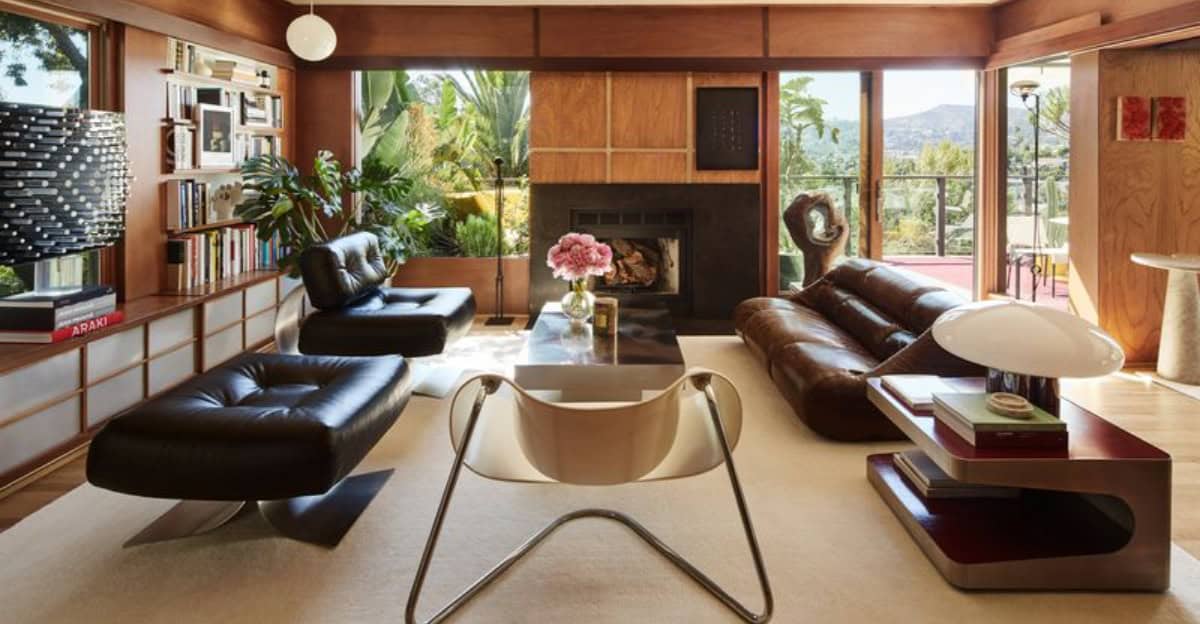The 1970s brought with it a unique blend of boldness and innovation in design that continues to inspire today.
As we delve into a retro revival, 10 defining elements of ’70s modernism are making a significant comeback, influencing contemporary aesthetics.
From vibrant colors to geometric patterns, these design elements offer a nostalgic yet fresh look, resonating with those who appreciate both history and style.
This exploration reveals why these aspects of ’70s design remain relevant and desirable, inviting a new generation to embrace their timeless appeal.
1. Earthy Color Schemes
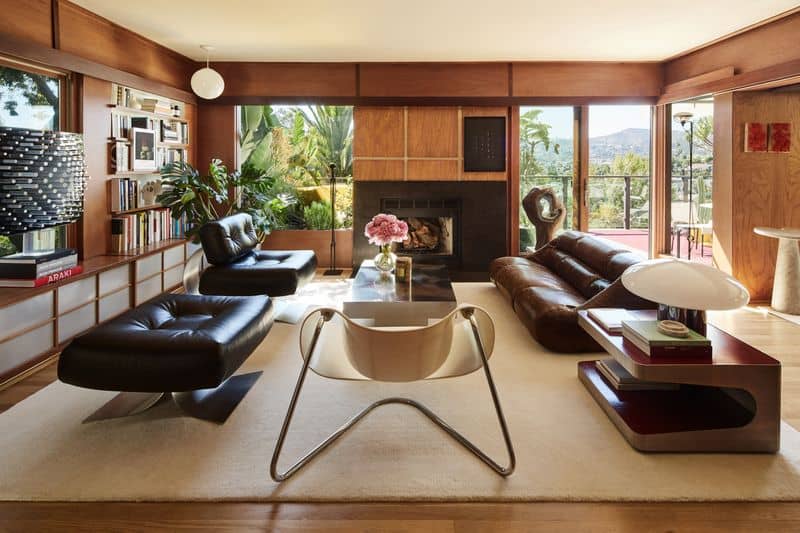
Earthy tones dominated the ’70s, with shades like mustard yellow, burnt orange, and avocado green creating warm, inviting spaces.
These colors are making a resurgence, offering a sense of comfort and nostalgia.
In modern interiors, these hues are often balanced with neutral colors, creating a harmonious blend of past and present.
The appeal lies in their ability to evoke a feeling of being grounded and connected to nature.
Many designers are now incorporating these vibrant tones in accent pieces, painting a vivid picture of retro charm reimagined for today’s world.
2. Geometric Patterns
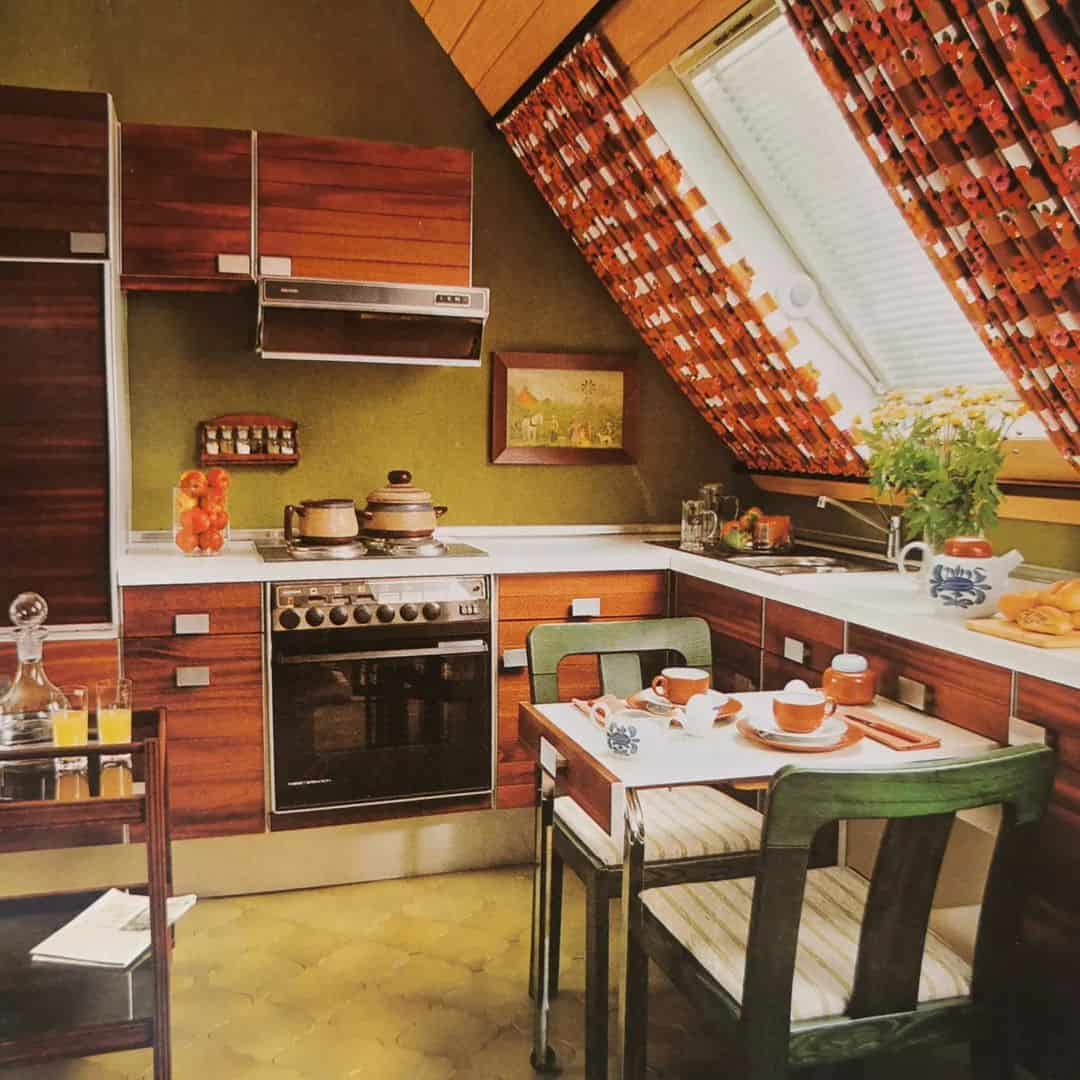
Geometric patterns were a hallmark of ’70s design, adding visual interest and a sense of order to interiors. These patterns are experiencing a revival, bringing a dynamic energy to contemporary spaces.
Often seen in wallpapers, textiles, and art, these designs are appreciated for their symmetry and precision. The bold lines and shapes create a visually stimulating environment that feels both retro and modern.
Today’s designers use these patterns to make bold statements, offering a nod to the past while embracing current trends in color and form.
3. Velvet Upholstery
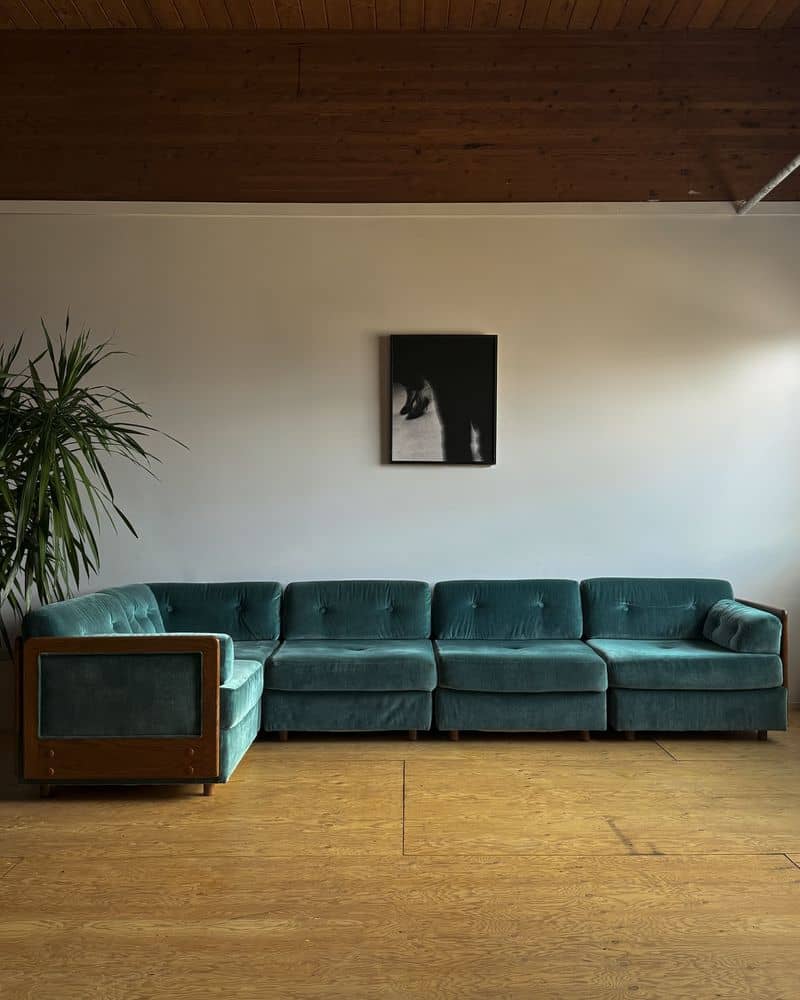
Velvet upholstery exudes luxury and sophistication, a signature feature of 1970s interiors. This rich fabric is back in vogue, adding elegance and warmth to modern homes.
The soft texture and sheen of velvet make it a standout choice for furniture, offering both comfort and style. Available in a range of jewel tones, velvet pieces serve as stunning focal points in any room.
With its timeless appeal, velvet continues to be favored by designers seeking to create opulent yet inviting spaces that harken back to the glamorous ’70s era.
4. Sunken Living Rooms
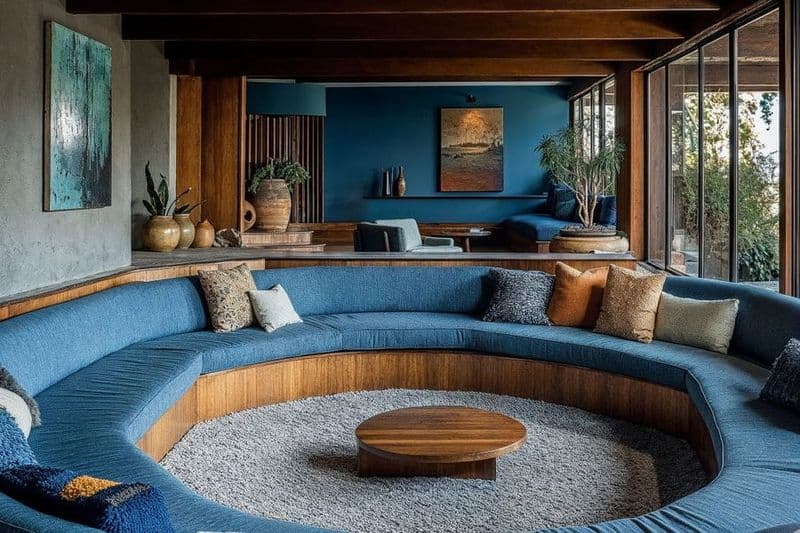
The sunken living room, or conversation pit, was a popular feature in 1970s homes, offering an intimate setting for social gatherings.
This architectural element is enjoying a comeback, appealing to those who value both style and social interaction.
These spaces encourage a relaxed atmosphere, where friends and family can gather comfortably. The design creates a distinct separation between the living area and the rest of the home.
Modern interpretations maintain the cozy feel but with updated materials and finishes, ensuring this retro feature fits seamlessly into contemporary interiors.
5. Rattan Furniture
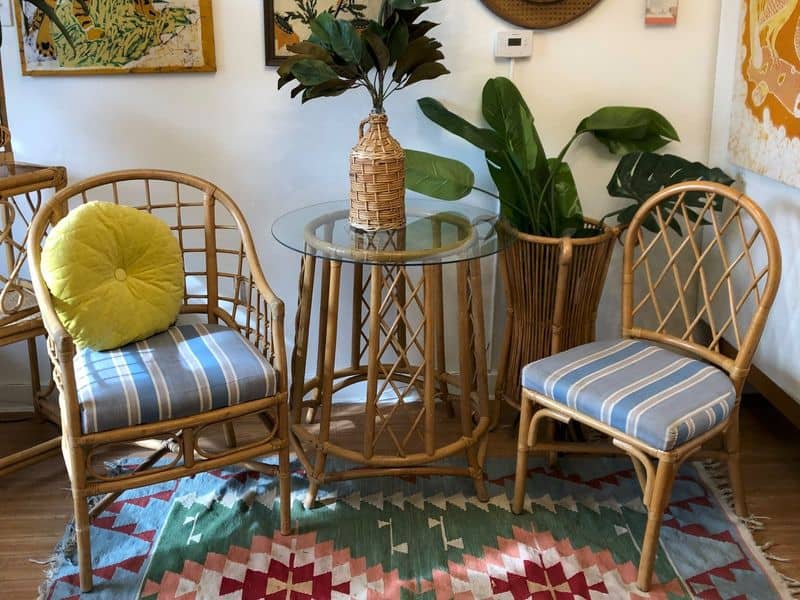
Rattan furniture, with its natural texture and lightweight design, was a staple of 1970s interiors. Today, it’s making a stylish return, reflecting a growing trend towards sustainable and eco-friendly materials.
The airy, woven look of rattan complements both indoor and outdoor spaces, offering versatility and charm. Its natural appeal brings warmth and a touch of the tropics to modern homes.
This resurgence is driven by a desire for organic, handcrafted elements that connect us to nature, echoing the free-spirited essence of the ’70s lifestyle.
6. Macramé Decor

Macramé, the art of knotting cords, became a defining craft of the 1970s, embodying the era’s bohemian spirit. This trend is back, adding texture and artistic flair to contemporary decor.
From wall hangings to plant holders, macramé pieces infuse spaces with a handcrafted, artisanal feel. The intricate designs provide visual interest and a connection to traditional craftsmanship.
Incorporating macramé into modern interiors brings a nostalgic yet fresh aesthetic, celebrating the beauty of handmade artistry that continues to captivate creative minds today.
7. Funky Light Fixtures

Light fixtures in the 1970s were anything but ordinary, characterized by bold shapes and vibrant colors. These funky designs are making a comeback, illuminating spaces with style and creativity.
Unique shapes and unexpected materials define these fixtures, offering a playful yet sophisticated lighting solution. They serve as statement pieces, drawing the eye and sparking conversation.
Today’s revival embraces both the whimsy and elegance of retro lighting, making it a perfect addition for those looking to add a distinctive flair to their interiors.
8. Bold Wallpaper Designs
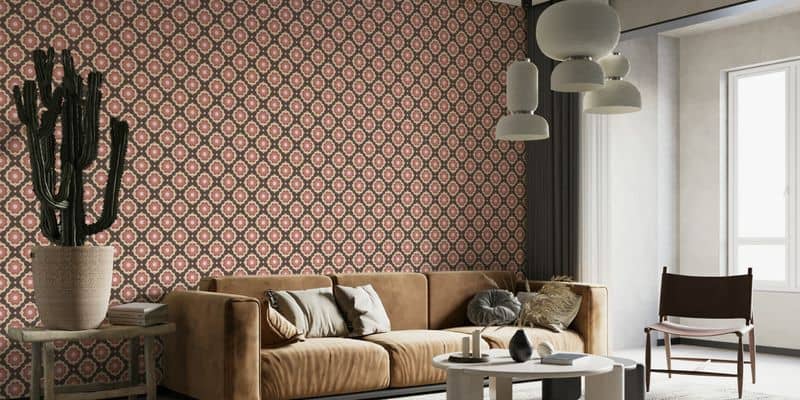
In the 1970s, wallpaper was all about making a statement, with oversized prints and vibrant colors dominating the scene. This bold approach is back, transforming modern walls into works of art.
Large floral and geometric patterns are particularly popular, offering a dramatic backdrop to contemporary interiors. The vivid designs add personality and a sense of nostalgia.
This trend’s resurgence speaks to a desire for expressive, eye-catching decor that captures the essence of ’70s flair while fitting seamlessly into today’s design narratives.
9. Lucite Furniture

Lucite furniture, known for its transparency and sleek lines, gained popularity in the 1970s as a symbol of modernity and innovation.
Its resurgence today reflects a continued appreciation for minimalist design.
The clear, acrylic material offers a clean, unobtrusive look that blends effortlessly with various styles. Lucite pieces bring a sense of openness and lightness to spaces, enhancing their visual appeal.
As designers revisit this iconic material, its versatility and elegance ensure lucite remains a favorite for those seeking a chic, understated aesthetic in their homes.
10. Shag Carpets
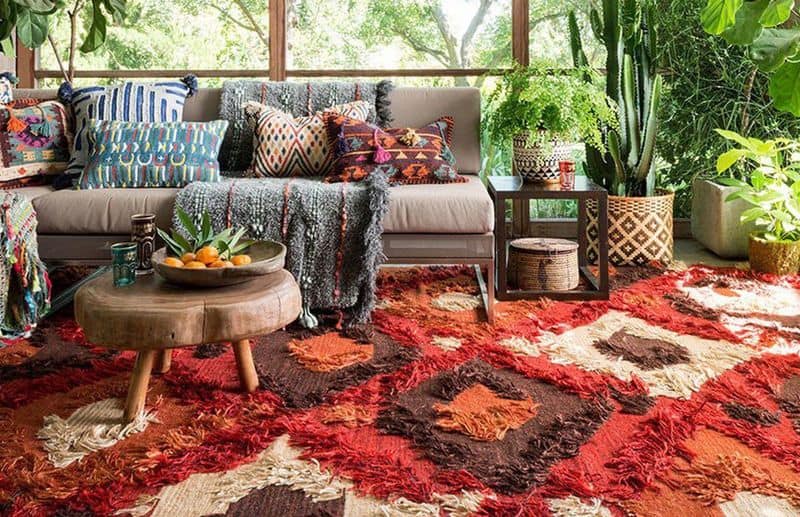
Shag carpets, with their long, fluffy pile, were synonymous with 1970s comfort and style. These tactile floor coverings are experiencing a revival, adding warmth and texture to modern interiors.
Available in a range of vibrant colors, shag carpets offer both visual and tactile appeal. They serve as a cozy foundation for living spaces, inviting relaxation and leisure.
This retro trend is being reimagined with contemporary twists, ensuring shag carpets remain a beloved element for those looking to infuse their homes with a touch of nostalgic comfort.

